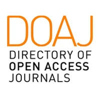Animation for the study of Renaissance treatises on architecture. Francesco di Giorgio Martini’s Corinthian capital as a showcase 
Abstract
Keywords
Full Text:
PDFDOI: http://dx.doi.org/10.2423/i22394303v10n2p19
References
Baldinucci, F. (1681). Vocabolario Toscano dell’Arte e del Disegno. Firenze: Per Santi Franchi al Segno della Passione. Digital edition, retrieved on October 30, 2020, from http://baldinucci.sns.it/html/index.html
Barnes, C. F. Jr. (2009). The Portfolio of Villard de Honnecourt (Paris, Bibliothèque nationale de France, MS Fr 19093): A New Critical Edition and Color Facsimile. Abingdon: Routledge.
Bartoli, A. (1914). I monumenti antichi di Roma nei disegni degli Uffizi di Firenze. Rome: C. A. Bontempelli.
Beck, J. H. (1969). M. Taccola, Liber tertius de ingeneis ac edifitiis non usitatis. Milan: Il Polifilo.
Beltramini, M. (2001). Le illustrazioni del Trattato d'architettura di Filarete: storia, analisi e fortuna. Annali di Architettura, 13, 25-52.
Bertocci, S., Pivetta, M., & Bigongiari, M. (2019). The Ashburnham 361 codex: Digital survey of the treatise on civil and militar architecture by Francesco di Giorgio Martini with the notes of Leonardo da Vinci. In P. Belardi (Ed.), Reflections. The art of drawing/ the drawing of art (pp. 359-364). Roma: Gangemi.
Biffi, M. (1997). Una proposta di ordinamento del testo di architettura del Codice Zichy. Le origini della produzione teorica di Francesco di Giorgio Martini. Annali Della Scuola Normale Superiore di Pisa. Classe di Lettere e Filosofia, 2(2), 531-600.
Birkenmajer, A. (1932). Zur Lebensgeschichte und wissenschaftlichen Tätigkeit von Giovanni Fontana (1395?-1455?). Isis, 17(1): 34-53.
Borsi, S. (1985). Giuliano da Sangallo: I disegni di architettura e dell'antico. Roma: Officina.
Bruschi, A. (1998). Brunelleschi e la nuova architettura fiorentina. In F. P. Fiore (Ed.), Storia dell’architettura italiana. [2] Il Quattrocento (pp. 38-113). Milan: Electa.
Bruschi, A., Pacioli, L., Colonna, F., & Leonardo. (1978). Scritti rinascimentali di architettura. Milan: Il Polifilo.
Burns, H (1994). I disegni di Francesco di Giorgio agli Uffizi di Firenze. In Fiore, F. P., & Tafuri, M. (Eds.), Francesco di Giorgio Architetto (pp. 330–357). Milan: Electa.
Cittadini, R. (1998). Figure femminili di Lisippo. Bollettino d'arte / Ministero Per i Beni e le Attività Culturali, Direzione Generale per il Patrimonio Storico, Artistico e Demoetnoantropologico, 6, 55-80.
Corso, A. (2005). ‘De Virginum poculis’: Considerazioni su Vitruvio 4, 1, 9. Materiali e Discussioni per l'analisi dei Testi Classici, 55, 193-203.
Corso, A., Romano, E., & Gros, P. (1997). Vitruvio, De architectura. 2 vols. Turin: Einaudi.
De Fiore, G. (1963). Baccio Pontelli, architetto fiorentino. Rome: Edizioni dell’Ateneo.
De Paoli, M., & Capone, A. (2015). New methods to survey and represent the classical architecture: the Rosario’s altar of Beata Paola’s chapel in Volta Mantovana. DisegnareCon, 8/14, 1-19.
Fiore, F. P. (1978). Città e macchine del '400 nei disegni di Francesco di Giorgio Martini. Florence: L. S. Olschki.
Fiore, F. P. (2019). Architettura e arte militare, mura e bastioni nella cultura del Rinascimento. Rome, Campisano Editore.
Galluzzi, P. (1991). Le macchine senesi: Ricerca antiquaria, spirito di innovazione e cultura del territorio. In P. Galluzzi (Ed.), Prima di Leonardo. Cultura e macchine a Siena nel Rinascimento (pp. 15-44). Milan: Electa.
Giardini Pedro, A. P. (2011). A ideia de ordem: symmetria e decor nos tratados de Filarete, Francesco di Giorgio e Cesare Cesarino. Tese (Doutorado – Área de Concentração: Projeto, Espaço e Cultura). São Paulo: FAUUSP.
Giuliano, A. (1994). Vitruvio e l'acanto. Palladio, 14, 29-36.
Gurrieri, F., Berti, L., & Leonardi, C. (1988). La basilica di San Miniato al Monte a Firenze. Florence: Giunti.
Hersey, G. (1988). The Lost Meaning of Classical Architecture: Speculations on Ornament from Vitruvius to Venturi. Cambridge, MA: MIT Press. Translation into Italian: Hersey, G. L. (2001).
Jones, M. (1991). Designing the Roman Corinthian Capital. Papers of the British School at Rome, 59, 89-150.
Krohn, F. (1912). Vitruvius Pollio. On Architecture. Leipzig: B. G. Teubner.
Luo, S. S., Shedd, B. A., & Nanetti, A. (2018). Enhancing the Experience of the Western Xia Imperial Tombs Heritage Site (PRC, Ningxia) through Animated Installations. SCIRES-IT - SCIentific RESearch and Information Technology, 8(1), 1-32. http://dx.doi.org/10.2423/i22394303v8n1p1
Maltese, C., & Maltese Degrassi L. (1967). Trattati di architettura, ingegneria e arte militare. Milan: Il Polifilo.
Mansuelli, G. (1958-1961). Galleria degli Uffizi: Le Sculture. 2 vols. Rome: Istituto Poligrafico dello Stato.
Marani, P., & Mussini, M. (1979 & 1994). Trattato di architettura di Francesco di Giorgio Martini. Il codice Ashburham 361 della Biblioteca Medicea Laurenziana di Firenze. 3 vols., with facsimile edition. Florence: Giunti Barbera.
Martini, F. G. (2002). La traduzione del "De architectura" di Vitruvio. Dal m. II. I.141 della Biblioteca Nazionale Centrale di Firenze. Pisa: Scuola Normale Superiore.
Merrill, E. M. (2013). The Trattato as Textbook: Francesco di Giorgio’s Vision for the Renaissance Architect. Architectural Histories, 1(1), Art. 20. DOI: http://doi.org/10.5334/ah.at
Migliari, R. (1991). Il disegno degli ordini e il rilievo dell’architettura classica: 5 pezzi facili. Disegnare Idee Immagini, 2, 49-66.
Mussini, M. (1991). Il "Trattato" di Francesco di Giorgio Martini e Leonardo: Il Codice Estense restituito. Parma: Università di Parma. Istituto di storia dell'arte.
Nanetti, A. (2020). Engineering Historical Memory. Retrieved on October 30, 2020, from https://engineeringhistoricalmemory.com/About.php
Nanetti, A., & Benvenuti, D. (2019). Animation of two-dimensional pictorial works into multipurpose three-dimensional objects. The Atlas of the Ships of the Known World depicted in the 1460 Fra Mauro’s Mappa Mundi as a showcase. SCIRES-IT - SCIentific RESearch and Information Technology, 9(2), 29-46. http://dx.doi.org/10.2423/i22394303v9n2p29
Papini, R. (1946). Francesco di Giorgio architetto. 3 vols. Florence: Electa Editrice.
Payne, A. A. (1999). The Architectural Treatise in the Italian Renaissance: Architectural Invention, Ornament, and Literary Culture. Cambridge: Cambridge University Press.
Piñero Vega, D., Valerga, A. P., Ordoñez Orellana, F. A., & Batista, M. (2019). Application of Computer Aided Design and Additive Manufacturing to the recovery of the Paddle Boat by Francesco Di Giorgio. Procedia Manufacturing, 41, 1119-1126.
Prager, F. D., & Scaglia, G. (1972). Mariano Taccola and his book ‘De ingeneis’. Cambridge, MA: MIT Press.
Promis, C., & Saluzzo, C. (1841). Trattato di architettura civile e militare di Francesco di Giorgio Martini archittetto senese del secolo XV. Turin: Tipografia Chirio e Mina.
Ridley, R. T. (1989). The Fate of an Architect: Apollodorus of Damascus. Athenaeum, 67, 551-565.
Scaglia, G. (1971). M. Taccola, ‘De machinis’: The engineering treatise of 1449. Wiesbaden: Ludwig Reichert.
Scaglia, G. (1991). Francesco di Giorgio, autore. In P. Galluzzi (Ed.), Prima di Leonardo. Cultura delle macchine a Siena e nel Rinascimento (pp. 57-80). Milan: Electa.
Scahill, D. (2009). The Origins of the Corinthian Capital. In R. V. Hoff, & P. Schultz (Eds.), Structure, Image, Ornament: Architectural Sculpture in the Greek World (pp. 40-53). Oxford: Oxbow Books.
Serlio, S. (1537). Regole generali di architetura sopra le cinque maniere de gli edifici, cioè, Thoscano, Dorico, Ionico, Corinthio, et Composito, con gli essempi dell’antiquità, che per la magior parte concordano con la dottrina di Vitruvio. Venice: Per Francesco Marcolini da Forlì. Later, published in Idem (1584), I sette libri dell’architettura (Book IV). Venice: Appresso Giovan Battista et Marchio Sessa Fratelli.
Serlio, S. (1551). Extraordinario libro di architettura di Sebastiano Serlio architetto del re christianissimo: Nel quale si dimostrano trenta porte di opera rustica mista con diversi ordini: & venti di opera dilicata di diverse specie con la scrittura davanti, che narra il tutto. Lyons: Per Giovan di Tournes.
Settia, A. (2004). Guido da Vigevano. Dizionario Biografico degli Italiani, 61.
Shelby, L. R. (1975). Mariano Taccola and His Books on Engines and Machines. Technology and Culture, 16(3), 466-475.
Shute, J. (1563). The first and chief groundes of architecture used in all the auncient and famous monymentes. London: T. Marshe.
Sparavigna, A. C. (2013). Giovanni de la Fontana, engineer and magician. Retrieved on October 30, 2020, from Cornell University Library at https://arxiv.org/pdf/1304.4588.pdf
Swetz, F. J. (2008). Leonardo da Vinci's Geometric Sketches - Cylinder and Cone. Convergence. Retrieved on October 30, 2020, from DOI: 10.4169/loci002559
Tapinassi, C. (2016). La trattatistica di architettura del Quattrocento. I disegni di Francesco di Giorgio Martini nel codice Ashburnham 361 della Biblioteca Medicea Laurenziana di Firenze. Tesi di Laurea. Corso di Laurea in Storia e Tutela dei Beni Culturali della Scuola di Studi Umanistici e della Formazione dell’Università degli Studi di Firenze.
Valturio, R. (1472). De re militari [On the military arts]. Verona: Johannes ex Verona.
Valzano, V., Negro, F., & Lucarella, D. (2019). Otranto Treasures in 3D. SCIRES-IT - SCIentific RESearch and Information Technology, 9(2), 17-28. http://dx.doi.org/10.2423/i22394303v9n2p17
Vecce, C. (2017). La biblioteca perduta. I libri di Leonardo. Rome: Salerno Editore.
Vitruvius the Ten Books on Architecture (1914), Translated by Morris Hicky Morgan. Cambridge, MA: Harvard University Press.
Article Metrics
Metrics powered by PLOS ALM
Refbacks
- There are currently no refbacks.
Copyright (c) 2020 Andrea Nanetti

This work is licensed under a Creative Commons Attribution-NonCommercial-NoDerivatives 4.0 International License.
SCIRES-IT, e-ISSN 2239-4303
Journal founded by Virginia Valzano





